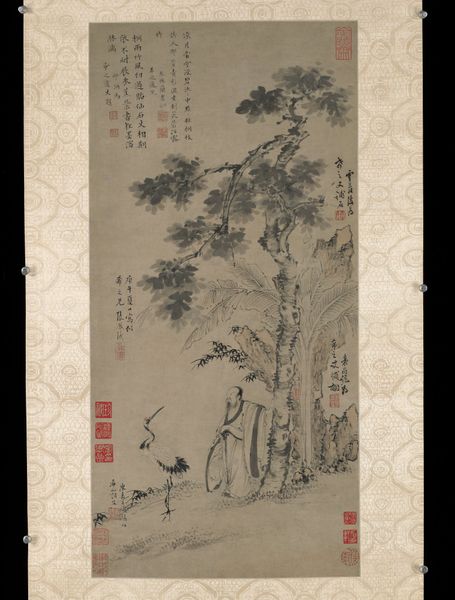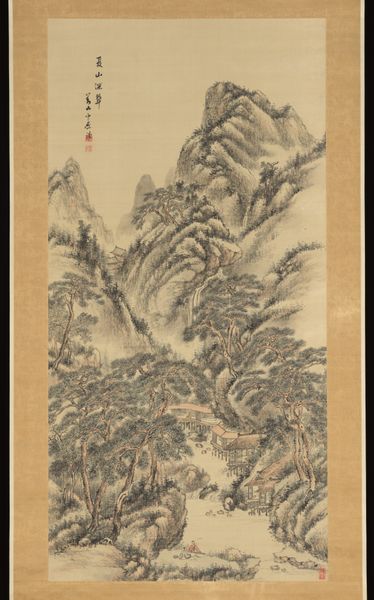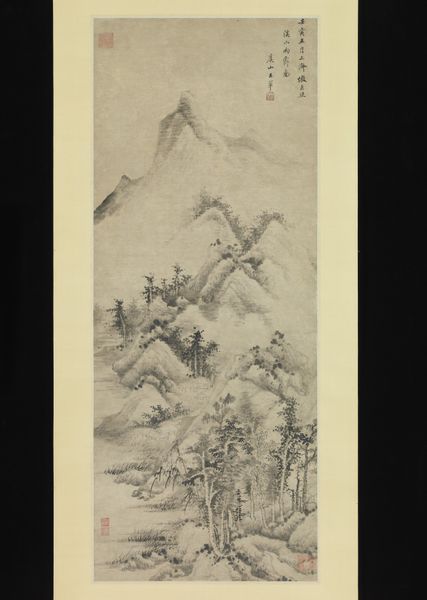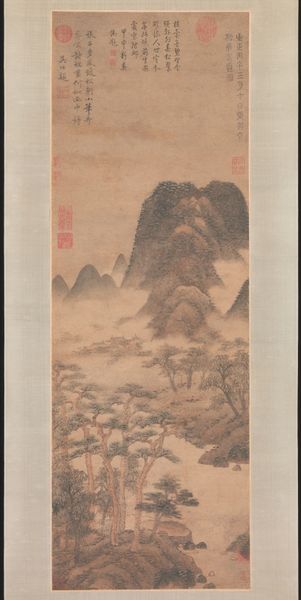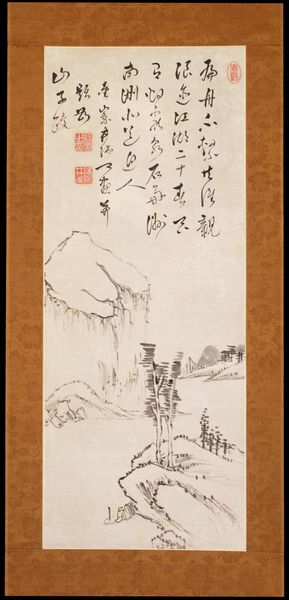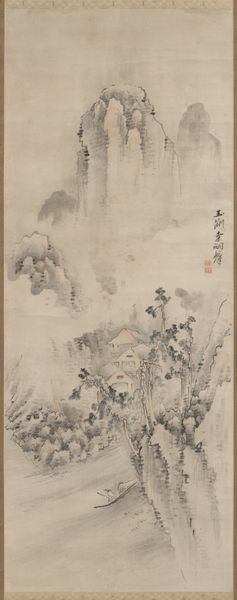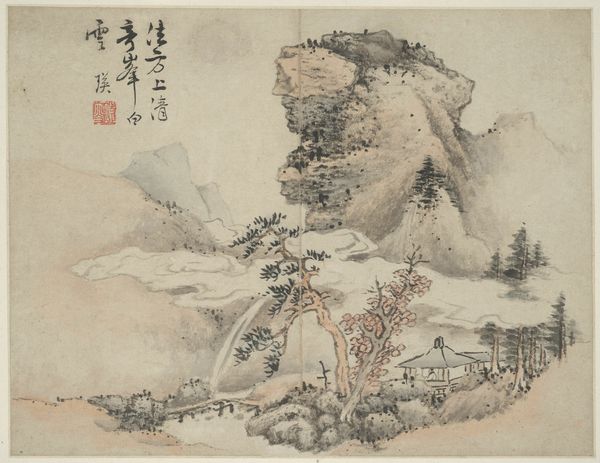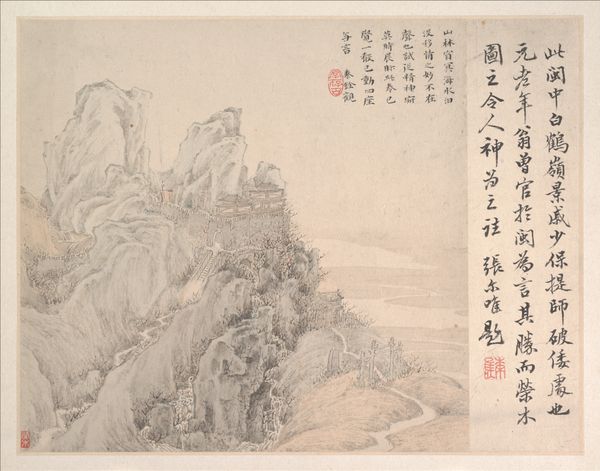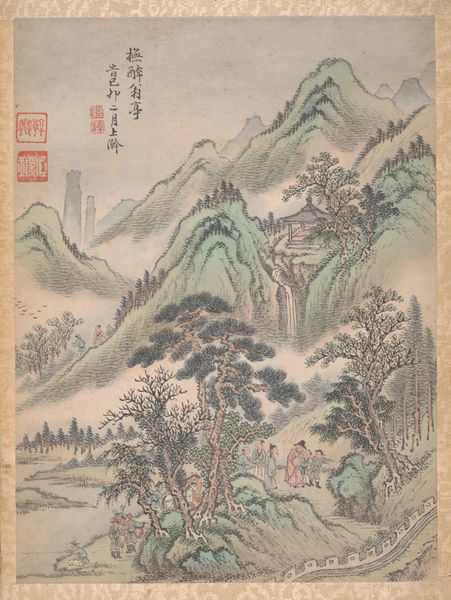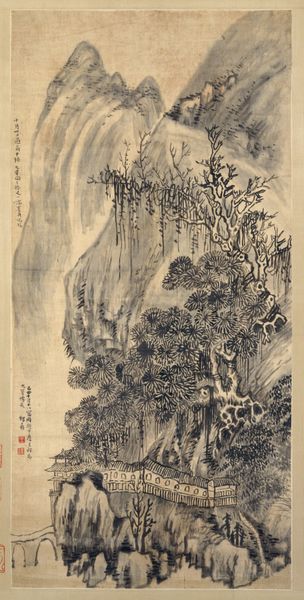
painting, paper, ink
#
medieval
#
painting
#
asian-art
#
landscape
#
paper
#
ink
#
mountain
Dimensions: Image: 24 1/4 x 10 1/4 in. (61.6 x 26 cm) Overall with mounting: 87 1/2 x 17 5/8 in. (222.3 x 44.8 cm) Overall with knobs: 87 1/2 x 20 5/8 in. (222.3 x 52.4 cm)
Copyright: Public Domain
Lu Guang painted ‘Spring Dawn Over the Elixir Terrace’ in ink on silk during the Yuan Dynasty, likely in the mid-14th century. It’s a classic example of Chinese landscape painting, also known as “shan shui,” which literally translates to "mountains and water.” But this artwork is not just about pretty scenery. Look at how Lu Guang uses the visual language of landscape to reflect philosophical ideas. The mountains represent the connection between heaven and earth, while the water symbolizes the flow of life and the concept of Dao, or “the Way.” It's possible that the terrace depicted in the painting alludes to seeking immortality through Daoism, which was popular at the time. China during the Yuan Dynasty was under Mongol rule, a period of cultural exchange and tension. Artists often used landscape painting as a way to express their feelings about the changing world around them. To fully understand this artwork, we need to delve into the history of Chinese philosophy, literature, and political history during the Yuan Dynasty. By exploring these resources, we can unlock the deeper meaning behind this seemingly simple landscape.
Comments
No comments
Be the first to comment and join the conversation on the ultimate creative platform.
